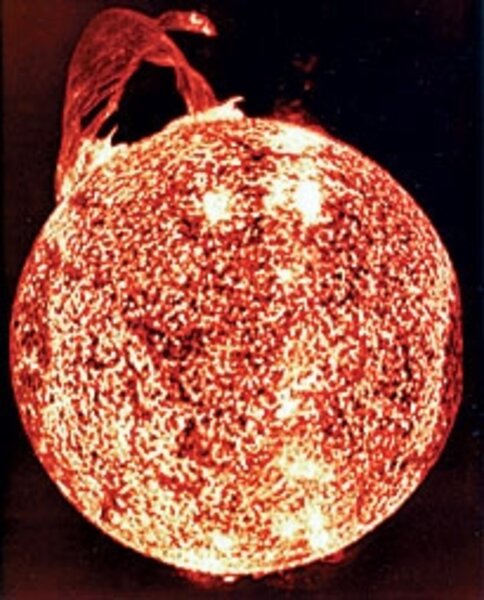Earthtalk: Do sunspots and solar flares affect climate change?
Loading...
Q: Don’t some scientists point to sunspots and solar wind as having more impact on climate change than human industrial activity?
– David Noss, California, Md.
A: Sunspots are storms on the sun’s surface that are marked by intense magnetic activity and play host to solar flares and hot, gassy ejections from the sun’s corona. Scientists believe that the number of spots on the sun cycles over time, reaching a peak every 11 years or so.
Some studies indicate that sunspot activity overall has doubled in the past century. The apparent result here on Earth is that the sun glows brighter by about 0.1 percent now than it did 100 years ago.
Solar wind, according to NASA’s Marshall Space Flight Center, consists of magnetized plasma flares and, in some cases, is linked to sunspots. It emanates from the sun and influences galactic rays that may, in turn, affect atmospheric phenomena on Earth, such as cloud cover. But scientists admit that they have much to learn about phenomena such as sunspots and solar wind.
Some skeptics of human-induced climate change blame global warming on natural variations in the sun’s output due to sunspots and/or solar wind. They say it’s no coincidence that an increase in sunspot activity and a run-up of global temperatures on Earth are happening concurrently. And they view regulation of carbon emissions as folly with negative ramifications for our economy and tried-and-true energy infrastructure. “[V]ariations in solar energy output have far more effect on Earth’s climate than soccer moms driving SUVs,” writes Southwestern Law School professor Joerg Knipprath in his Token Conservative blog.
Many climate scientists agree that sunspots and solar wind could be playing a role in climate change, but the vast majority view it as very minimal and attribute Earth’s warming primarily to emissions from industrial activity – and they have thousands of peer-reviewed studies to back up that claim.
Solar astronomer Peter Foukal of the firm Heliophysics Inc., who has tracked historical sunspot intensities at different places around the globe dating back four centuries, also concludes that such solar disturbances have little or no impact on global warming. Nevertheless, he adds, most up-to-date climate models incorporate the effects of the sun’s variable degree of brightness into their overall calculations.
Ironically, the only way to really find out if sunspots and solar wind are playing a larger role in climate change than most scientists now believe would be to significantly reduce our carbon emissions. Only in the absence of that potential driver will researchers be able to tell how much impact natural influences have on Earth’s climate.
Questions about living green? Send to: EarthTalk, c/o E - The Environmental Magazine, Box 5098, Westport, CT 06881 ; or earthtalk@emagazine.com.





